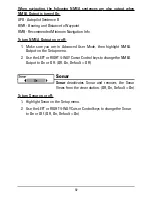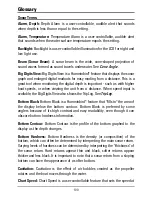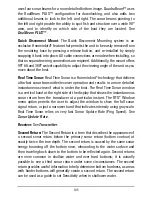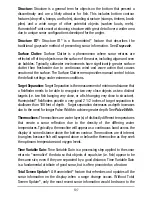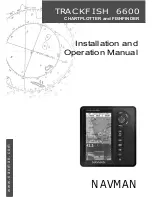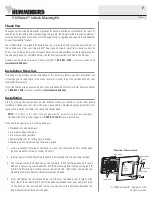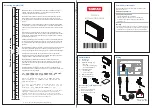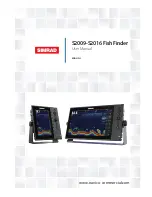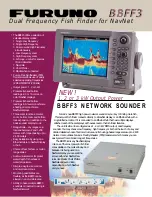
102
user's menu settings in permanent memory. Settings are retained even when the
unit is powered off indefinitely.
Fish Arch:
A Fish Arch is the apparent "arch" that appears on the display when
any object moves through the sonar cone. The arch results from a gradual
decrease in distance to an object as it moves into the sonar cone. The distance to
an object changes due to the conical shape of the sonar beam, which causes the
distance to be greater at the edges of the beam than at the center of the beam.
When this distance change is graphed on the display, an arch appears.
Fish ID+™:
Fish ID+™ is a Humminbird® feature that uses advanced sonar
processing algorithms to determine if a detected object is likely to be a fish. When
the sonar signal from an object meets strict parameters, the unit draws a Fish
Symbol (or icon) and the digital depth of the target. On DualBeam and DualBeam
PLUS™ units, fish detected in the narrow center beam are shown as shaded
symbols, and fish detected in the wider beam are shown as hollow symbols.
Fish Symbol:
A Fish Symbol is the graphic that is displayed on the screen when
Fish ID+ determines that a sonar return is likely to be a fish. See
Fish ID+
.
Freeze Frame:
Freeze Frame is a Humminbird® feature that pauses the sonar
scrolling so that the image on screen can be studied with greater detail. See
Instant Image Update
.
Frequency:
Frequency is a measure of the number of sound wave cycles per
second of a sound impulse transmitted underwater. A typical frequency for
fishfinders is 200 kHz, which offers a good balance of performance under many
conditions. Lower frequencies, such as 50 kHz, are capable of penetrating to
greater depths, but with less resolution. Higher frequencies, such as 455 kHz, offer
greater resolution, but are limited in depth performance. Humminbird® uses a
variety of frequencies that are optimized for specific applications.
Grayscale:
Grayscale is the use of varying shades of gray to represent the
strength of the sonar signal on the display , and is a very intuitive method of
presenting information. Traditionally, the strongest sonar signals are
represented in black, and progressively weaker signals are represented in
progressively lighter shades of gray.
Grayscale, Inverse:
Inverse Grayscale is a Humminbird® feature that reverses the
Summary of Contents for 580
Page 123: ...116 Notes ...
Page 124: ...117 Notes ...
Page 125: ...118 Notes ...
Page 126: ...119 Notes ...
Page 127: ...120 Notes ...
Page 128: ...121 Notes ...
Page 129: ...122 Notes ...
Page 130: ...123 Notes ...
Page 131: ...124 Notes ...
Page 132: ...125 Notes ...
Page 133: ...126 Notes ...





